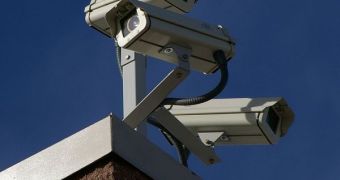As part of a major research project, scientists are currently working on a closed-circuit television (CCTV) system that could be able to predict suspicious behavior usually associated with crime in bus travelers. The cameras would relay information back to a control room, where operators would be able to watch suspicious characters, and then intervene even before an attack happens. If emergency-response units cannot get to the bus on time to prevent the harmful actions, then they will be just in time to catch the perpetrators, the creators of the new system believe.
According to scientists at the Queens University Belfast – who are in charge of developing the system, and the software associated with it –, the CCTV cameras could lead to a significant curbing in the rate of public-transportation attacks, to which many innocent travelers fall victim, the BBC News reports. Although the new system is still in its theoretical stage, the scientists say they could have it ready for implementation within five years. By that time, every person that boards a bus could be profiled when they climb the stairs. The work is being conducted at the QUB's newly founded Center for Secure Information Technologies.
CCTV systems already exist in the United Kingdom, for example, in a wide array of places, including public transportation. However, the millions of cameras do little to prevent crime, experts argue. “Their impact on anti-social behavior and criminal behavior is negligible – assaults on buses are a major problem and very little CCTV material is analyzed in real-time,” the head of the research project, Dr. Paul Miller, says. He adds that the 15-expert team is currently in the preliminary stage of work, where it is compiling a database featuring methods of establishing an individual's gender and body shape.
“The system won't be able to say, 'this is an incident' – but it will be able to push that video stream to the top of the queue for security analysts [in a control room] to make a decision. Ultimately, most of the events will be benign, with nothing going on. That's why you still need the human element,” Miller explains. He admits that bus interiors are one of the most difficult environments for cameras to work, but the technology can be developed to a stage where it can make a difference, he says.
“Research shows crimes happen when there is an opportunity and no chance of payback. If a security analyst can directly communicate with the assailant, to tell them they are being watched, it will have a marked effect on the offender. Just one example of this actually happening can have a deterrent effect on the crime rate in an area,” he concludes.

 14 DAY TRIAL //
14 DAY TRIAL //